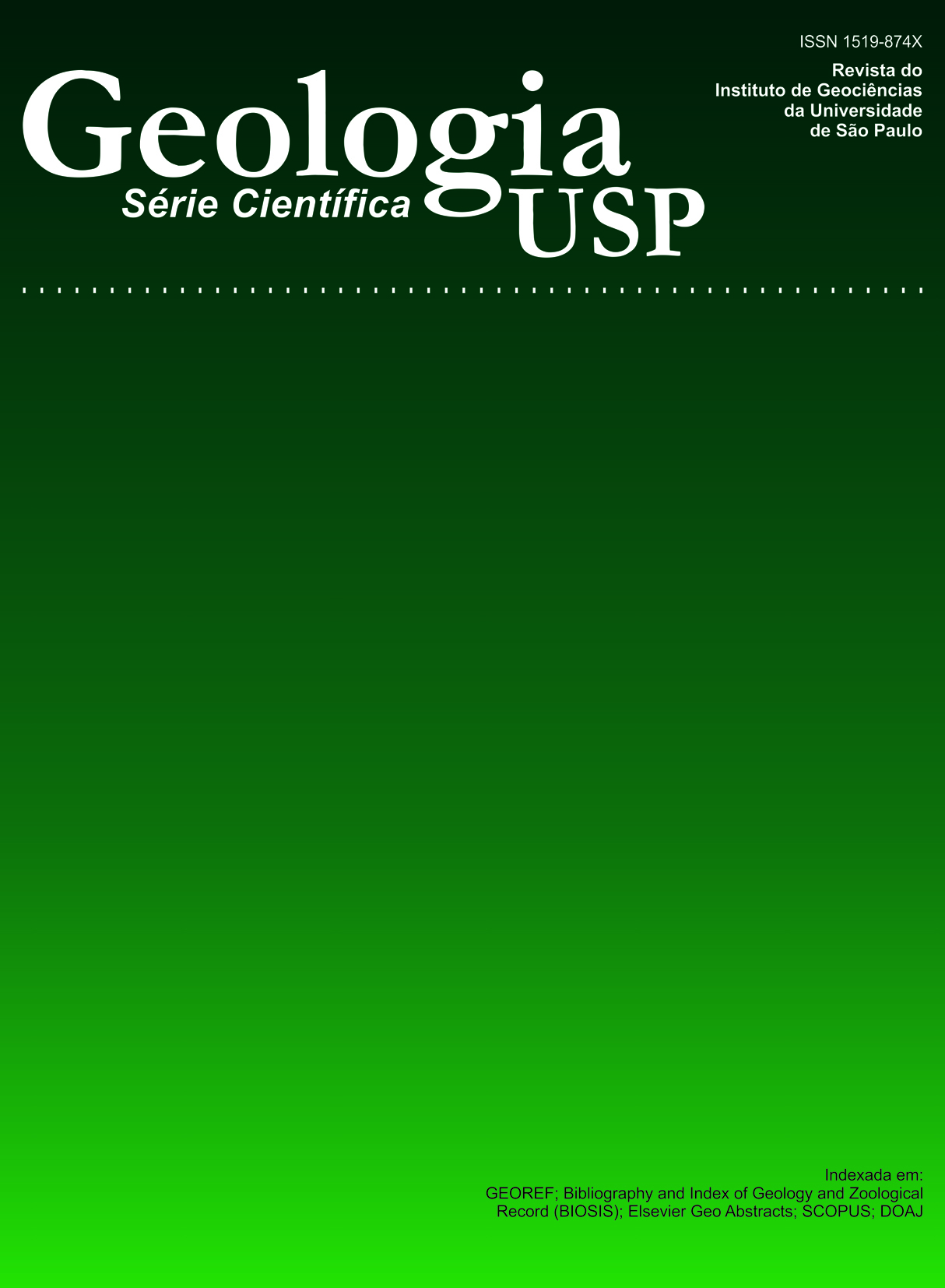Sedimentação e deformação tectônica cenozoicas na porção central da Bacia Potiguar
DOI:
https://doi.org/10.5327/Z1519-874X2010000100002Palavras-chave:
Tectônica, Bacia Potiguar, CenozoicoResumo
As coberturas sedimentares cenozoicas ocorrem ao longo de toda costa brasileira e frequentemente são descritas informalmente como uma unidade única. Quanto à evolução tectônica, os estudos sobre as bacias sedimentares brasileiras se concentram em sua fase rifte, enquanto a fase pós-rifte tem sido considerada um período de pouca atividade. Na Bacia Potiguar, embora as unidades cretáceas pós-rifte sejam bem investigadas, as coberturas sedimentares neogênicas e quaternárias, incluindo suas identificação e diferenciação, são pobremente conhecidas. Alguns trabalhos anteriores têm demonstrado que unidades sedimentares pós-rifte aparentemente não deformadas exibem um complexo padrão deformacional em todas as escalas de observação, contudo o estudo dessa deformação geralmente não tem abrangido as coberturas neogênicas e quaternárias. O principal objetivo deste estudo é a caracterização de unidades sedimentares cenozoicas aflorantes e da tectônica associada, na porção central da Bacia Potiguar, estado do Rio Grande do Norte, Brasil. O estudo se concentrou na descrição da Formação Barreiras e coberturas aluviais quaternárias, depósitos marinhos e eólicos, na escala 1:100.000. Análises de fácies, estudos granulométricos e datação por luminescência foram realizados. Dez unidades sedimentares litoestratigráficas informais e formais foram descritas, em adição ao embasamento cristalino pré-cambriano. Os principais resultados indicam que muitos depósitos aluviais quaternários eram anteriormente mapeados como a Formação Barreiras, de idade miocênica. Foi possível determinar os novos limites dos depósitos sedimentares quaternários e sua relação com unidades mais antigas. Adicionalmente, foi possível identificar os maiores sistemas de falhas na bacia, que apresentam direções NW-SE e NE-SW, que coincidem com as macroformas do relevo. Assim, estes maiores sistemas de falha, especialmente o sistema de direção NW-SE, controla a deposição de unidades sedimentares cenozoicas.Downloads
Os dados de download ainda não estão disponíveis.
Publicado
2010-03-01
Edição
Seção
Artigos
Licença
Autores que publicam nesta revista concordam com os seguintes termos:
- Autores mantém os direitos autorais e concedem à revista Geologia USP. Série Científica, o direito de primeira publicação, com o trabalho sob a licença Creative Commons BY-NC-SA (resumo da Licença: https://creativecommons.org/licenses/by-nc-sa/4.0 | texto completo da licença: https://creativecommons.org/licenses/by-nc-sa/4.0/legalcode) que permite o compartilhamento do trabalho de forma não comercial e conferindo os devidos créditos autorais da primeira publicação nesta revista.
- Autores têm autorização para assumir contratos adicionais separadamente, para distribuição não-exclusiva da versão do trabalho publicada nesta revista (publicar em repositório institucional ou como capítulo de livro), conferindo os devidos créditos autorais da primeira publicação nesta revista.
- Autores têm permissão e são estimulados a publicar e distribuir seu trabalho online (em repositórios institucionais ou na sua página pessoal) a qualquer ponto antes ou durante o processo editorial, uma vez que isso pode gerar alterações produtivas, bem como aumentar o impacto e a citação do trabalho publicado (Veja O efeito do Acesso Aberto e downloads no impacto das citações).
Como Citar
Moura-Lima, E. N., Sousa, M. O. L., Bezerra, F. H. R., Aquino, M. R. de, Vieira, M. M., Lima-Filho, F. P., Fonseca, V. P. da, & Amaral, R. F. do. (2010). Sedimentação e deformação tectônica cenozoicas na porção central da Bacia Potiguar . Geologia USP. Série Científica, 10(1), 15-28. https://doi.org/10.5327/Z1519-874X2010000100002















